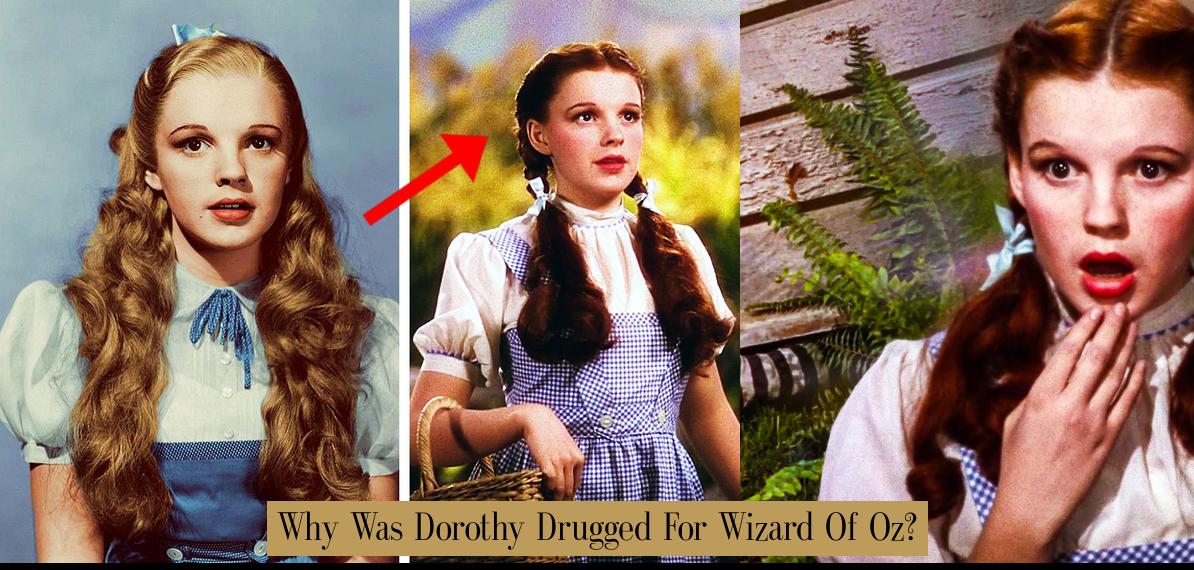Why Was Dorothy Drugged for The Wizard of Oz? The Shocking Truth Behind the Rainbow
Let’s face it, we all grew up loving The Wizard of Oz. From the catchy tunes to the iconic characters, it’s a movie that’s captured hearts for generations. But behind the sparkly curtain, there’s a dark secret that’s been haunting the film’s legacy: Judy Garland, the beloved Dorothy, was drugged throughout the filming.
Yes, you read that right. The adorable, cheerful little girl who skipped down the Yellow Brick Road was actually on a cocktail of amphetamines and barbiturates to keep her going through grueling filming schedules. This isn’t some conspiracy theory whispered in dark corners of the internet. This is a tragic reality that took a devastating toll on Garland’s life.
So, why was Dorothy drugged? The answer is as simple as it is disturbing: MGM, the studio behind the film, wanted their young star to be a perpetual motion machine.
Imagine working 18-hour days, singing, dancing, and acting under the harsh studio lights. Now imagine being 16 years old, with your meals carefully rationed to maintain a specific body image. This was Judy Garland’s reality.
The studio executives, desperate for a star, saw nothing wrong with drugging a teenaged girl to keep her going. They gave her amphetamines to stay awake and energized, and barbiturates to knock her out so she could sleep a few hours before starting the cycle all over again.
But the abuse didn’t stop there. Garland was also subjected to intense pressure to maintain a certain weight. She was constantly reminded of her size, and her meals were rationed to a ridiculous degree. This, combined with the drug use, took a devastating toll on her health and mental well-being.
A Little Bit of History:
Let’s take a trip back in time and understand the context. It was 1939, a time when Hollywood was a world of its own. Studio bosses had immense power, and child stars were seen as replaceable commodities. Imagine the pressure on a young Judy Garland, already dealing with a difficult relationship with her own mother, who was also actively involved in her career.
The studio system was notorious for its exploitative practices. Actors were often subjected to long hours, demanding schedules, and immense pressure to perform. And children, especially those deemed “stars,” were particularly vulnerable.
The Legacy of Abuse:
The effects of this abuse stayed with Garland for the rest of her life. She struggled with drug addiction, mental health issues, and a deep-seated feeling of being exploited. Her tragic death at the age of 47 was a stark reminder of the dark side of Hollywood and the devastating consequences of the studio system’s unchecked power.
But there’s a silver lining in this dark tale. Garland’s story has become a powerful symbol of the need to protect child actors from exploitation. Today, there are stricter regulations and laws in place to safeguard the welfare of young performers, and organizations dedicated to advocating for their rights.
The Importance of Taking a Stand:
Garland’s story should serve as a wake-up call. We need to be vigilant in protecting children from exploitation, regardless of where it occurs. It’s crucial to remember that children deserve to be treated with care and respect, and that their well-being should never be sacrificed for the sake of entertainment or profit.
Moving Forward: A Call to Action:
So, what can we do? Here are a few ways we can help:
- Support organizations that advocate for the rights of child actors. Organizations like the Screen Actors Guild-American Federation of Television and Radio Artists (SAG-AFTRA) and the Alliance of Children’s Rights advocate for fair treatment and safe working environments for child performers.
- Be informed about the issues surrounding child actors. Research and learn about the challenges children face in the entertainment industry.
- Be critical consumers of media. Pay attention to the stories of child actors and support films and productions that prioritize the well-being of their young performers.
The Wizard of Oz remains a beloved classic, but it’s crucial to remember the human cost behind its magic. By understanding the truth behind Dorothy’s story, we can ensure that future generations of child actors are protected from the exploitation that Garland endured.
Remember, a little bit of awareness and action can go a long way in making a difference.
This isn’t just about Judy Garland. It’s about every child who has been or could be exploited for the sake of entertainment. Let’s make sure their stories don’t end in tragedy.
This post is just the beginning. There’s much more to learn about Judy Garland’s life and the devastating impact of the studio system on child actors.
Let’s keep the conversation going. Share your thoughts, stories, and resources in the comments below. Together, we can create a safer and more just world for children in the entertainment industry.
